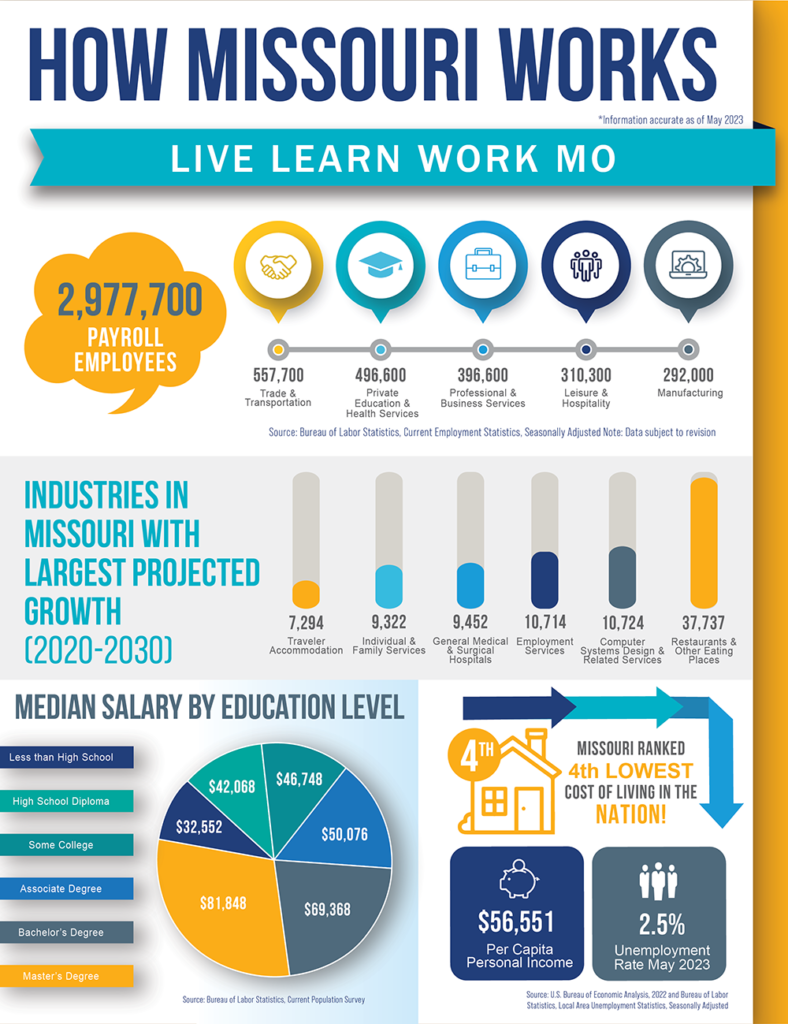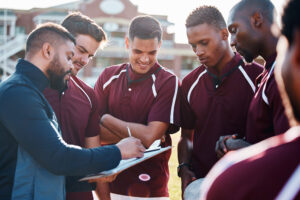Esports has been viewed by many as the awkward younger sibling to the sports that we know and love like football and baseball. However, the esports army is arriving, and they are only getting stronger. The first official video game competition took place in 1972 on the Stanford University campus with a game called Spacewar. The grand prize of that competition was a year-long subscription to Rolling Stone magazine.

In 1990, Nintendo began the Nintendo World Championships in which players competed in games like Super Mario Bros and Tetris. Fast forward to 2021, when a game called DOTA 2 hosted its championship with a prize pool of $40.1 Million, nearly triple the prize pool for the Masters Golf Tournament.
All of this shows how far this movement has come. From a subscription to a magazine to $40 million, and it continues to grow. Competitive gaming has grown so much that people like Robert Kraft, Shaquille O’Neal, Drake, Mike Tyson, and P Diddy, just to name a few, are investing. Along with these well-known figures, colleges have begun to take an interest in the subject, and many have made large investments in their esports programs. Robert Morris University in Chicago was the first to offer esports scholarships back in 2014. With the global esports market valued at $1.2 Billion in 2019, several other colleges have followed in its footsteps. As of May 2021, 175 colleges around the country offer esports scholarships. Missouri has over 15 schools that offer scholarship opportunities in this field.
How Can I Get an Esports Scholarship?

Getting an esports scholarship for college is slightly different than getting a scholarship for other sports. Esports programs don’t typically have scouts attend events and watch you play or even reach out to you. Most colleges host annual tryouts and give out scholarships based on those. Esports competitions are almost always livestreamed somewhere online, so a good idea would be to watch one of those and see how you may stack up to the competition. These scholarships don’t come without stipulations, though. There is almost always a GPA requirement to even get on the team, much less receive and maintain a scholarship. However, the perks are well worth the hard work in the classroom. Players can receive jerseys, travel opportunities, gear, and media attention, and gain a large social media following. Schools with esports scholarships tend to make it well-known that this opportunity is there for students, especially if the school has made a large investment in the program. So, if you have a school in mind, check to see if they offer esports scholarships and what that college’s specific requirements are!
Are These Scholarships the Same as Other Athletic Scholarships?
The short answer is it depends. It depends on the school and how much money that school has put toward its esports program. Typically, your scholarship will work more like an academic scholarship since there aren’t many full-ride esports scholarship opportunities out there…yet. That means you will receive money from the college that you can use any way you see fit as long as it is used for college. So, funds could be used for on-campus food, tuition, books, and more.
What is the Outlook for Esports in College?
 The outlook is only positive! The global esports market is projected to rise from $1.1 billion in 2020 to $3.6 billion in 2027. How does this translate to college scholarship opportunities, though? With many major universities and smaller colleges investing already, it’s safe to say that if esports continues to see the growth that it has in the past, more colleges will take notice. If the market value of esports does hit the $3.6 billion projection, it would be nearly nine times more valuable than the men’s and women’s college basketball tournaments combined. And if esports were a sports franchise, it would make it the 15th most valuable franchise in the world. Statistics like this will certainly attract more attention to the scene and likely bigger financial contributions from universities around the country. With bigger financial input from schools, students will be able to receive more from their scholarships, along with schools being able to expand their programs and offer more spots for students on these teams leading to more scholarships. After all of this, you may still wonder, what are students gaining out of this past college? Well, just like other professional sports, there is a professional esports scene where gamers around the world are making millions in this industry. Students can gain scholarship money through their schools and take that talent to the next level.
The outlook is only positive! The global esports market is projected to rise from $1.1 billion in 2020 to $3.6 billion in 2027. How does this translate to college scholarship opportunities, though? With many major universities and smaller colleges investing already, it’s safe to say that if esports continues to see the growth that it has in the past, more colleges will take notice. If the market value of esports does hit the $3.6 billion projection, it would be nearly nine times more valuable than the men’s and women’s college basketball tournaments combined. And if esports were a sports franchise, it would make it the 15th most valuable franchise in the world. Statistics like this will certainly attract more attention to the scene and likely bigger financial contributions from universities around the country. With bigger financial input from schools, students will be able to receive more from their scholarships, along with schools being able to expand their programs and offer more spots for students on these teams leading to more scholarships. After all of this, you may still wonder, what are students gaining out of this past college? Well, just like other professional sports, there is a professional esports scene where gamers around the world are making millions in this industry. Students can gain scholarship money through their schools and take that talent to the next level.
Collegiate Esports Opportunities in Missouri
 With over 20 college and university esports programs in Missouri, there are plenty of options. Each program offers a unique array of titles that they compete in, so it’s important to do your research beforehand. This article has discussed how to go about receiving a scholarship, if your chosen school offers it, how these scholarships work, and the outlook of esports in college. However, as mentioned, each institution is different. It’s important to note that esports opportunities aren’t limited to playing on a team. There are several classes you could take to gear you up for a career in esports once you graduate. Some colleges offer esport-specific classes. For others, you need to get a bit more creative. Classes on information technology, live event entertainment, team management, and sports marketing are all great ways to get a step ahead of your competition. The best method, however, is to talk to your counselor. They are a fantastic help and will be able to guide you down the best path toward your goals!
With over 20 college and university esports programs in Missouri, there are plenty of options. Each program offers a unique array of titles that they compete in, so it’s important to do your research beforehand. This article has discussed how to go about receiving a scholarship, if your chosen school offers it, how these scholarships work, and the outlook of esports in college. However, as mentioned, each institution is different. It’s important to note that esports opportunities aren’t limited to playing on a team. There are several classes you could take to gear you up for a career in esports once you graduate. Some colleges offer esport-specific classes. For others, you need to get a bit more creative. Classes on information technology, live event entertainment, team management, and sports marketing are all great ways to get a step ahead of your competition. The best method, however, is to talk to your counselor. They are a fantastic help and will be able to guide you down the best path toward your goals!
Some schools that have esports programs are the University of Missouri, the University of Missouri-St. Louis (UMSL), the University of Missouri-Kansas City (UMKC), Columbia College, Missouri S&T, Missouri Western, Northwest Missouri State, Maryville University, University of Central Missouri, Southeast Missouri State, Missouri Baptist University, Missouri Southern State University, and Mineral Area Community College. (Note: There are more options out there in Missouri, these are just a few!)
Overall, esports is on the rise, and collegiate esports is important to growing the industry. Kids can take something they truly enjoy and make a career out of it that has endless possibilities. There are many more professional gaming opportunities than there are in other professional sports, but the road to get there is just as challenging. Competing in these games at the highest level takes years of practice and hard work, and finally, all that hard work and all the late nights playing video games is paying off. Literally.

 It is easy to get caught up in the big victories of your college experience: getting scholarships, passing classes, and graduating. What about those small victories that add up throughout the semester? Did you give a really good presentation or successfully finish a large project? Did you manage to make it to every class during the semester, or even take a day off for your mental health?
It is easy to get caught up in the big victories of your college experience: getting scholarships, passing classes, and graduating. What about those small victories that add up throughout the semester? Did you give a really good presentation or successfully finish a large project? Did you manage to make it to every class during the semester, or even take a day off for your mental health? Relaxation techniques
Relaxation techniques Even if you are doing a summer class or an internship, there is probably time during the summer to set down the devices and spend some time away from the screen. While this may seem like a suggestion to cut the cord completely for a while,
Even if you are doing a summer class or an internship, there is probably time during the summer to set down the devices and spend some time away from the screen. While this may seem like a suggestion to cut the cord completely for a while,  e all know that getting out into nature or green spaces helps, but did you know that Blue Spaces — places where you are near water — are also as beneficial to your mental health?
e all know that getting out into nature or green spaces helps, but did you know that Blue Spaces — places where you are near water — are also as beneficial to your mental health?  According to
According to 
 It’s perfectly normal to not know what you want to do in life when you’re in high school. There’s a lot to think about! College, a career, money, extra-curriculars, and more. To expect someone at this age to have it all figured out is crazy. However, you enjoy sports! It’s not something that every little kid dreams of, working in sports. Most dream of being out there on the field playing, but there are plenty of opportunities off the field. A lot of students don’t think of sports as a career path if they aren’t actually on the field. Don’t blame them, but those students couldn’t be more wrong. Let’s discuss some ways you could get ahead of your competition starting in high school.
It’s perfectly normal to not know what you want to do in life when you’re in high school. There’s a lot to think about! College, a career, money, extra-curriculars, and more. To expect someone at this age to have it all figured out is crazy. However, you enjoy sports! It’s not something that every little kid dreams of, working in sports. Most dream of being out there on the field playing, but there are plenty of opportunities off the field. A lot of students don’t think of sports as a career path if they aren’t actually on the field. Don’t blame them, but those students couldn’t be more wrong. Let’s discuss some ways you could get ahead of your competition starting in high school.
 We don’t want to sugar-coat it, though. There will be a lot of grunt-work as an intern, such as repetitive tasks, long hours, and late nights. All of this may seem unimportant at the time, but rest assured, it is a crucial part of the process. All the pom-poms in your seat when you arrive at the game, all the t-shirts you catch during timeouts, all the students shooting half-court shots, all of that is done by interns. Games wouldn’t be the same without them and their hard work. So don’t feel like you’re being undervalued or the stuff you’re doing isn’t meaningful. You definitely want to carry out these tasks with a mindset that you’re doing it to set yourself up for a more successful future. Your supervisors will take note of your hard work and dedication.
We don’t want to sugar-coat it, though. There will be a lot of grunt-work as an intern, such as repetitive tasks, long hours, and late nights. All of this may seem unimportant at the time, but rest assured, it is a crucial part of the process. All the pom-poms in your seat when you arrive at the game, all the t-shirts you catch during timeouts, all the students shooting half-court shots, all of that is done by interns. Games wouldn’t be the same without them and their hard work. So don’t feel like you’re being undervalued or the stuff you’re doing isn’t meaningful. You definitely want to carry out these tasks with a mindset that you’re doing it to set yourself up for a more successful future. Your supervisors will take note of your hard work and dedication.  Let’s start with more school, though. If you decide you want to get a master’s, the next step in the sports world is to become a graduate assistant. There are graduate assistant positions open all over the country and for most sectors within sports. Operations, marketing, and coaching all have graduate assistant opportunities. Almost every collegiate sports team has G.A. coaches on their staff. The same goes for marketing and operations. Your supervisor from undergrad could be a great resource and, as mentioned earlier, are almost always willing to help you further your career.
Let’s start with more school, though. If you decide you want to get a master’s, the next step in the sports world is to become a graduate assistant. There are graduate assistant positions open all over the country and for most sectors within sports. Operations, marketing, and coaching all have graduate assistant opportunities. Almost every collegiate sports team has G.A. coaches on their staff. The same goes for marketing and operations. Your supervisor from undergrad could be a great resource and, as mentioned earlier, are almost always willing to help you further your career.  We’ll start off with one that most of you have probably done before in some capacity. Using flashcards is a great way to train the brain and associate a question with an answer. When studying for a multiple-choice test/quiz, this is a great study option that doesn’t require staring at a book for hours. Adding visual elements such as pictures of different colors for different subjects can also train the brain and help memorization.
We’ll start off with one that most of you have probably done before in some capacity. Using flashcards is a great way to train the brain and associate a question with an answer. When studying for a multiple-choice test/quiz, this is a great study option that doesn’t require staring at a book for hours. Adding visual elements such as pictures of different colors for different subjects can also train the brain and help memorization. This one isn’t so much a tip to help you study, but rather to make studying easier. Listening to music can be a great way to get into your own zone and eliminate outside distractions. Also, your favorite type of music may or may not work for studying. Experiment with types of music to see what works for you, and it may not be something you’ve listened to or thought you liked! Similarly to mnemonics, you could associate lyrics to songs you like with answers to problems. Possibly replacing the lyrics with an answer but keeping the melody could help. The possibilities are endless!
This one isn’t so much a tip to help you study, but rather to make studying easier. Listening to music can be a great way to get into your own zone and eliminate outside distractions. Also, your favorite type of music may or may not work for studying. Experiment with types of music to see what works for you, and it may not be something you’ve listened to or thought you liked! Similarly to mnemonics, you could associate lyrics to songs you like with answers to problems. Possibly replacing the lyrics with an answer but keeping the melody could help. The possibilities are endless! The first thing to keep in mind when studying with friends is that becoming distracted gets very easy, and if they’re studying for a different subject at the same time, it may not be the best idea to quiz them or have them quiz you. Now, if you’re studying the same thing, this becomes much easier! Along with studying with a friend, the environment you’re in can have a big impact on the effectiveness of your studying. Many like to study in a library, some prefer a coffee shop, some prefer their rooms, and so on. There are limitless places, so if you are finding it tough to study wherever you do currently, think about some other environments to try out. It can also be a good idea to study certain subjects on certain days of the week. We are creatures of habit, and the more routine we have, the easier it is to stick with it. This concept can be applied to studying.
The first thing to keep in mind when studying with friends is that becoming distracted gets very easy, and if they’re studying for a different subject at the same time, it may not be the best idea to quiz them or have them quiz you. Now, if you’re studying the same thing, this becomes much easier! Along with studying with a friend, the environment you’re in can have a big impact on the effectiveness of your studying. Many like to study in a library, some prefer a coffee shop, some prefer their rooms, and so on. There are limitless places, so if you are finding it tough to study wherever you do currently, think about some other environments to try out. It can also be a good idea to study certain subjects on certain days of the week. We are creatures of habit, and the more routine we have, the easier it is to stick with it. This concept can be applied to studying.
 The ACT
The ACT 
 The ACT
The ACT 
 How do I prepare for the test?
How do I prepare for the test? The ACT has released its
The ACT has released its  How do I prepare for the test?
How do I prepare for the test? Final thoughts
Final thoughts